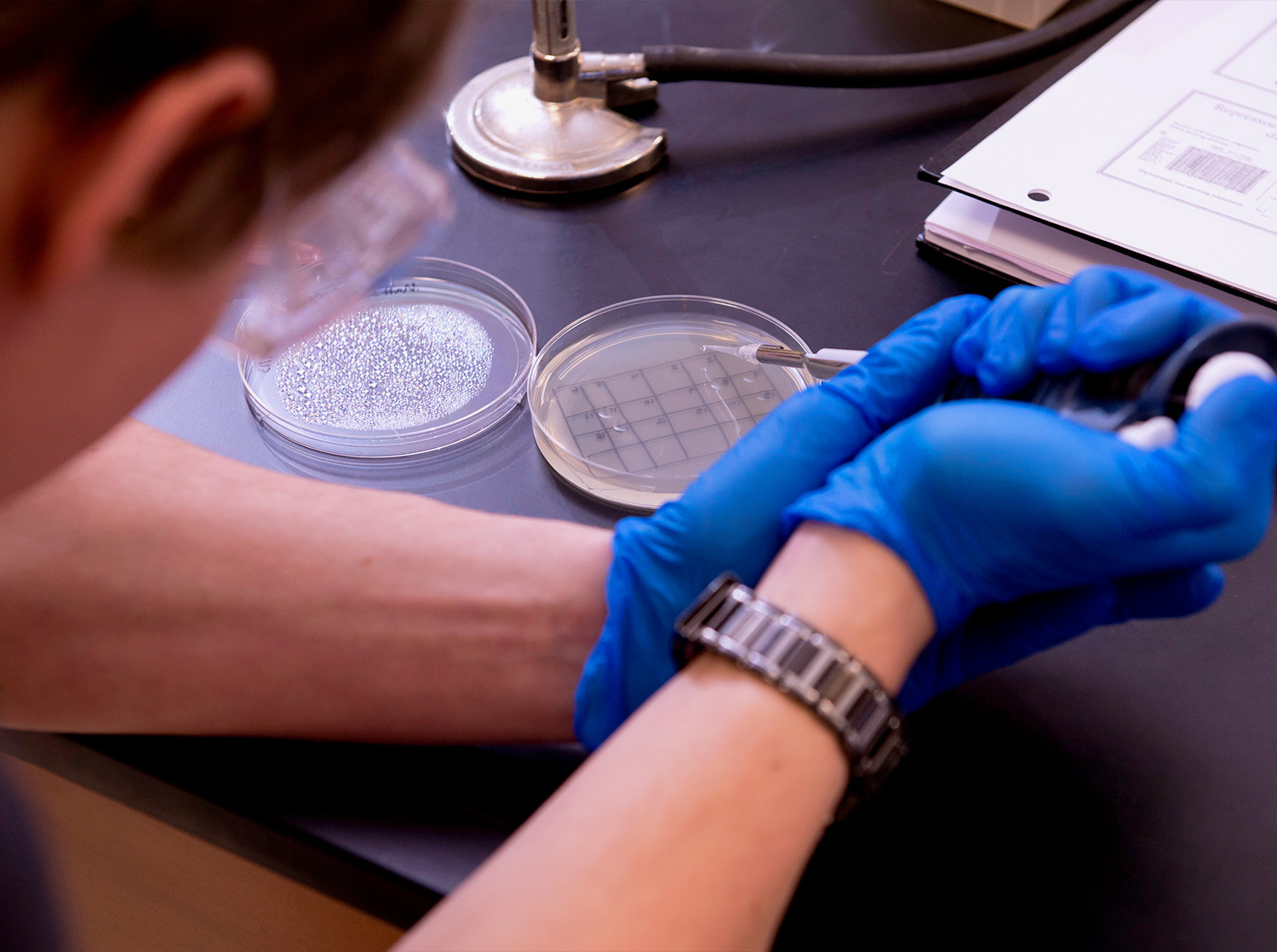Tissue and Cellular Innovation Center
The mission of the UWRF Tissue and Cellular Innovation Center is to develop a nationally recognized, self-supporting "Center of Excellence" for research and training in tissue engineering and stem cell biology through collaborative interactions with academic, industry and clinical partners.

Innovation Center History
The UWRF Tissue and Cellular Innovation Center has it’s origins in the Lyden Lab which was founded in 2001. This lab originally focused on normal placental cell biology, continuing work done by UWRF Professor Tim Lyden at the Ohio State University Medical School during the 1990s.
By 2004, the lab was transitioning to a broader interest in developmental biology and had begun to use 3D cell culture to model tissue formation. This work involved a significant emphasis on fetal stem cell biology in relation to artificial tissue formation. With the support of the UWRF Foundation, the lab next transitioned into the Cellular Imaging and Analysis Center.
In 2006, the lab - now called the UWRF Center for Advanced Cell Biology - shifted almost exclusively to working on 3D artificial tissues and potential applications of this material. This new focus on practical applications was fostered by significant funding support from WiSys Technology Foundation. In addition, funding has also been provided throughout the TCIC's development by the UWRF Foundation, the CAS and CAFES Deans' offices and the Provost. Significant support and some funding has also been available through the Biology Department and biotechnology program.
In February 2008, the Managing Director of the WiSys Technology Foundation proposed that the Center for Advanced Cell Biology transition into one of five proposed "Innovation Centers" to be established throughout the UW System. These Centers represent a new paradigm at the comprehensive campuses of the System which focuses on an economic development approach that combines cutting edge teaching/training, research and community outreach as well as unique new partnerships with industrial and clinical collaborators.
Current elements of the TCIC research program
- Development of complex composite artificial tissues or ATs based on cell lines, primary fetal stem cells and human embryonic stem cells.
- Expanding our working "library" of natural extracellular matrix (ECM) materials.
- Development of new artificial ECM based on "biomimetic" concepts.
- Development of translational medicine applications of our 3D culture technology in cancer as well as other clinically relevant areas.

